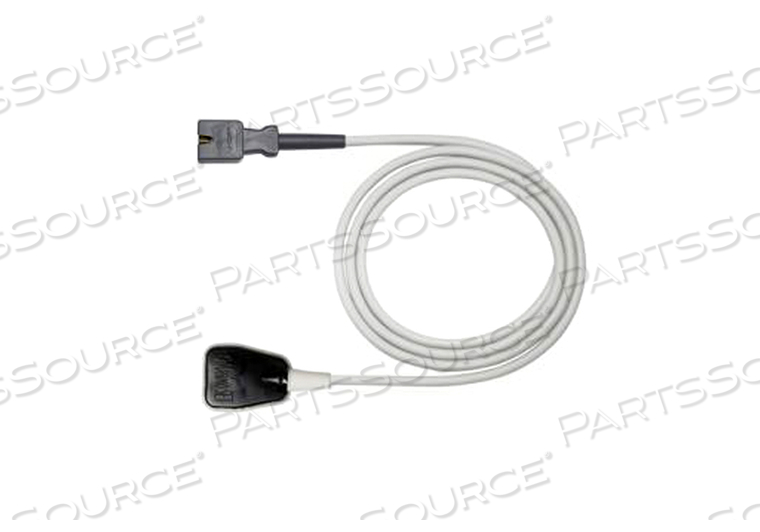LNCS TF-I TRANSFLECTANCE FOREHEAD SENSOR by Masimo


OEM#: 1896LNCS TF-I TRANSFLECTANCE FOREHEAD SENSOR by Masimo
The Masimo LNCS TF-I reflective forehead sensor provides an alternative site for pulse oximetry. In many cases, access to a patient's hands and feet may not be available, or the hands may not be receiving sufficient blood flow.
For an alternative to the finger-worn sensors typically employed when using a Masimo oximeter. This setup works well for both continuous monitoring and also for stress testing. These sensors are meant to be used on individuals weighing at least 30KG (66 pounds) and is an ideal alternative when the use of a finger sensor is impractical.
This sensor is usable for both spot checking and for long term usage.
The Masimo LNCS TF-I reflective forehead sensor provides an alternative site for pulse oximetry. In many cases, access to a patient's hands and feet may not be available, or the hands may not be receiving sufficient blood flow.
For an alternative to the finger-worn sensors typically employed when using a Masimo oximeter. This setup works well for both continuous monitoring and also for stress testing. These sensors are meant to be used on individuals weighing at least 30KG (66 pounds) and is an ideal alternative when the use of a finger sensor is impractical.
This sensor is usable for both spot checking and for long term usage.
- Masimo
- RAD 8
- RAD 5
- RAD-57
The Masimo LNCS TF-I reflective forehead sensor provides an alternative site for pulse oximetry. In many cases, access to a patient's hands and feet may not be available, or the hands may not be receiving sufficient blood flow.
For an alternative to the finger-worn sensors typically employed when using a Masimo oximeter. This setup works well for both continuous monitoring and also for stress testing. These sensors are meant to be used on individuals weighing at least 30KG (66 pounds) and is an ideal alternative when the use of a finger sensor is impractical.
This sensor is usable for both spot checking and for long term usage.
The Masimo LNCS TF-I reflective forehead sensor provides an alternative site for pulse oximetry. In many cases, access to a patient's hands and feet may not be available, or the hands may not be receiving sufficient blood flow.
For an alternative to the finger-worn sensors typically employed when using a Masimo oximeter. This setup works well for both continuous monitoring and also for stress testing. These sensors are meant to be used on individuals weighing at least 30KG (66 pounds) and is an ideal alternative when the use of a finger sensor is impractical.
This sensor is usable for both spot checking and for long term usage.
- Masimo
- RAD 8
- RAD 5
- RAD-57
The Masimo LNCS TF-I reflective forehead sensor provides an alternative site for pulse oximetry. In many cases, access to a patient's hands and feet may not be available, or the hands may not be receiving sufficient blood flow.
For an alternative to the finger-worn sensors typically employed when using a Masimo oximeter. This setup works well for both continuous monitoring and also for stress testing. These sensors are meant to be used on individuals weighing at least 30KG (66 pounds) and is an ideal alternative when the use of a finger sensor is impractical.
This sensor is usable for both spot checking and for long term usage.
The Masimo LNCS TF-I reflective forehead sensor provides an alternative site for pulse oximetry. In many cases, access to a patient's hands and feet may not be available, or the hands may not be receiving sufficient blood flow.
For an alternative to the finger-worn sensors typically employed when using a Masimo oximeter. This setup works well for both continuous monitoring and also for stress testing. These sensors are meant to be used on individuals weighing at least 30KG (66 pounds) and is an ideal alternative when the use of a finger sensor is impractical.
This sensor is usable for both spot checking and for long term usage.
- Masimo
- RAD 8
- RAD 5
- RAD-57
